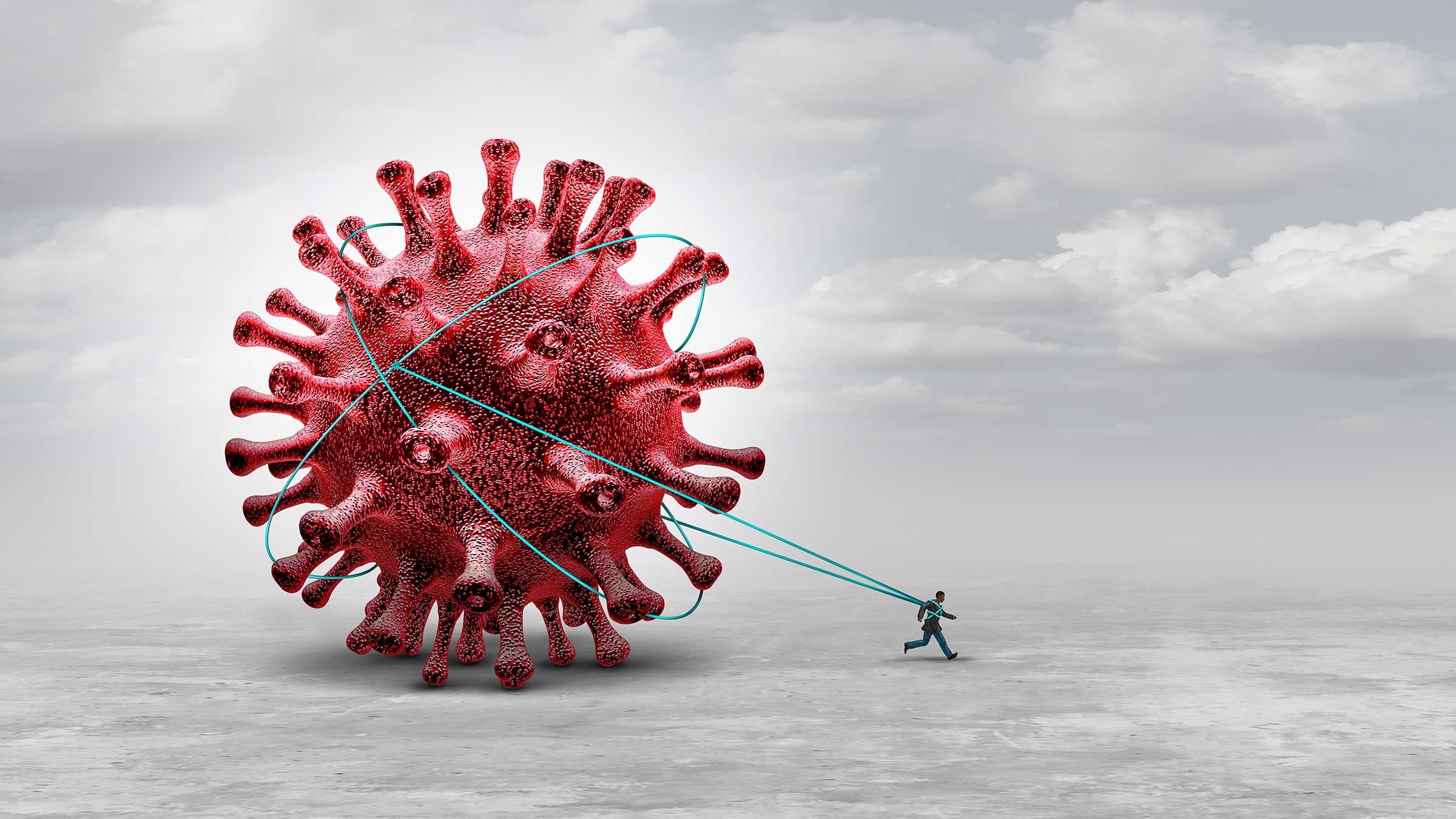
The threat of severe illness from COVID-19 has dwindled since 2020, but many people — as many as 1 in 13 Americans (7.5%), as of 2022 — now struggle with symptoms of long COVID, or what health professionals call the “post-acute sequelae” of COVID-19 (post-acute aftereffects of COVID-19).
Since COVID-19 reached the United States, we’ve learned more about the symptoms of long COVID, some treatments that might help, and how long these symptoms could last — but we’re still far from having all the answers yet.
Meanwhile, some people with long COVID might struggle to communicate symptoms to their health care team or to find support from friends and family who don’t understand how much someone’s health can be affected long after a COVID-19 infection.
Since March 2021, The Ohio State University Wexner Medical Center has operated the Post-COVID Recovery Clinic to diagnose and treat patients with Long COVID. The Ohio State University is also running an important clinical trial of an agent (amantadine) that might be helpful for patients with brain fog. Additional clinical trial are planned. For more information on opportunities to participate in this research, you can email research coordinator Rece Foss at rece.foss@osumc.edu.
As part of the Ohio State Wexner Medical Center's Center to STOP COVID (Serological Testing to Improve Outcomes from Pandemic COVID-19), we also conduct research to learn as much as we can about the long-term effects of COVID-19.
Below are other resources and other helpful information we can offer these long COVID patients.
Currently known symptoms of long COVID
Patients have helped researchers identify more than 200 symptoms affecting most areas of the body, including:
- heart and lungs (shortness of breath, cough, heart pounding)
- nervous system (difficulty concentrating or thinking, changes in taste or smell, dizziness when standing, depression, anxiety)
- digestive system (diarrhea, stomach pain, change in appetite)
- muscle and joints (pain, aches)
- overall body symptoms (fever, chills, weakness, tiredness or fatigue that interferes with daily activities)
The symptoms of long COVID can be similar to or different from the initial illness from the COVID-19 virus. Also, some of the symptoms can resemble other conditions, such as chronic fatigue syndrome and postural orthostatic tachycardia syndrome (POTS), which may make diagnosis challenging. Long COVID has been associated with the development of other long-term complications, such as diabetes.
Researchers are still learning about what is happening in the body after being infected with the virus. There are several possible explanations for long COVID, but none have been proven definitively.
After an infection appears to run its course, the virus might become active again, which could cause the symptoms of long COVID. Another possibility is that the immune system might stay active after the virus is gone, causing immune cells to release chemicals that cause inflammation and damage tissues and organs. The immune system could also make antibodies that attack the systems of the body.
How is long COVID diagnosed?
Long COVID is currently defined as symptoms that start within one to three months after SARS-CoV-2 infection and are not explained by any other diagnosis.
There is no specific test to diagnose long COVID.
Because long COVID is challenging to diagnose, a health care provider will complete a thorough health history (including any COVID-19 diagnosis, positive test results, symptoms or exposure) and examination.
When do long COVID symptoms typically start?
Most people recover from acute COVID-19 infection within several days to a few weeks, but some people might experience symptoms that do not resolve, or they develop new symptoms or experience the return of symptoms.
Long COVID is defined as symptoms that persist at least four weeks after infection with the virus. It can occur after mild or asymptomatic infection, after severe infection.
Where to find treatment for long COVID symptoms
Work is underway to find medicines and treatments that cure long COVID. In the meantime, symptoms and quality of life can be managed and improved through an individualized plan of care that you can create with the other members of your health care team.
Lifestyle measures can make a big difference in long COVID symptoms. When feeling especially fatigued, many people benefit from simply prolonged rest.
It is important for each patient, their family and their employer to understand that long COVID is a real illness and is a common cause of disability. Employers should be asked to make accommodations (sick time, reduced hours, modified duties) to allow long COVID patients to recover. It is also important to manage the stress of living with long COVID through healthy activities such as deep breathing, meditation, mindfulness, well-balanced meals, exercise (if tolerated), quality sleep, alcohol and drug avoidance, enjoyable hobbies and strong social connections.
Other treatments used in the long COVID clinic here at Ohio State include rehabilitation techniques, breath training, cognitive rehabilitation and psychological support. In addition, we sometimes use medications to treat symptoms such as brain fog, headaches, insomnia and breathing difficulties.
Ask your health care provider if there is a clinic in your area that specializes in care of patients with long COVID.
Is long COVID permanent?
Each person who develops long COVID will experience symptoms uniquely. The more than 200 symptoms of long COVID can combine in a variety of ways and for varying lengths of time. Symptoms might last for days, weeks, months or even years. For some, symptoms can go away and then return, although many patients will experience improvement over time.
Who’s most likely to develop long COVID after a COVID-19 infection?
There is a lot yet to be learned about the risk factors for developing long COVID, but some people have a higher risk. These groups include:
- those who did not receive a COVID-19 vaccine
- those who had a severe COVID-19 illness (with or without hospitalization) or developed multisystem inflammatory syndrome
- people with certain health conditions (diabetes, obesity, asthma or autoimmune diseases)
- people of Hispanic or Latino heritage
- people with female reproductive organs
- older people
- transgender individuals
- people with certain disabilities
People who have had at least one COVID-19 vaccine dose have a 25% reduced risk of developing long COVID after COVID-19 infection, and those who have had two vaccine doses have a 50% reduced risk of long COVID after infection, compared with people who haven't been vaccinated against COVID-19.
Long COVID risk might also be dependent on which variant of the virus caused the infection and if someone was unable to rest and recover from their infection. Long COVID can occur with each new infection with the COVID-19 virus.
Support resources for people with long COVID
There are several national support groups that can offer assistance for people with long COVID. These include Body Politic and Long COVID Alliance.
Those with long COVID might be interested in participating in long COVID research as a way to help manage the uncertainty of this illness. The National Institutes of Health (NIH) has a research project called the RECOVER Initiative, in which thousands of children and adults have already joined studies.
Advocating for one’s health is an important aspect of managing this illness. The U.S. Centers for Disease Control and Prevention (CDC) has designed a Healthcare Appointment Checklist (also available in Spanish) for Post-COVID Conditions that can help organize care before, during and after an appointment for long COVID.






